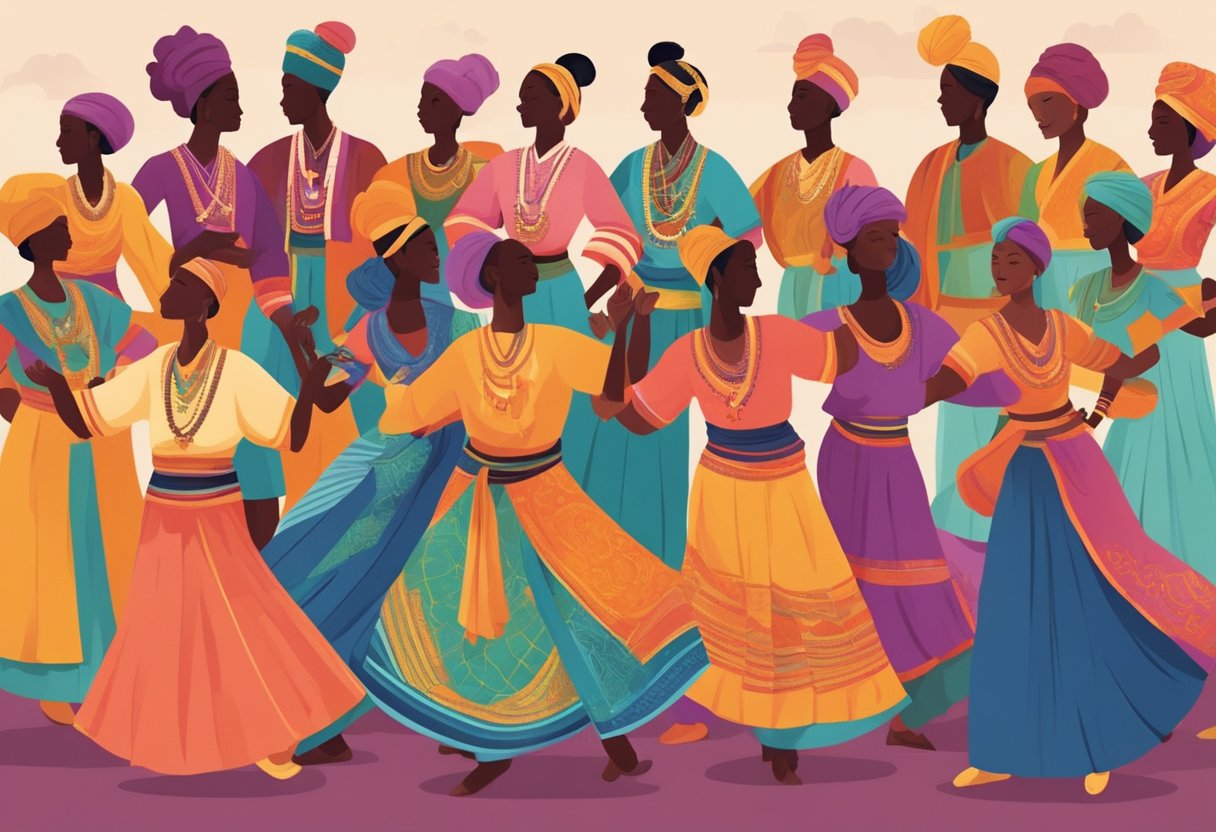Types Of Dances
Dance is a form of art that has been around for centuries. It is a physical expression of emotion, culture, and creativity. There are many different types of dances that have originated in different parts of the world, each with their unique style and history. In this article, we will explore the different types of dances and their significance in the world of art and expression.
Historical and Cultural Origins of Dance
Dance has been a part of human culture for thousands of years. It has been used to celebrate, mourn, and communicate. Different cultures have developed their unique styles of dance, which reflect their traditions, beliefs, and values. From the traditional dances of Africa to the classical ballet of Europe, dance has played a significant role in shaping cultures and their identities.
Popular Dance Styles Across the Globe
Dance has evolved over the years, and today, there are many different styles of dance. Some of the most popular dance styles include ballet, jazz, hip hop, salsa, and tango. Each style has its unique characteristics, music, and movements. Dance has become a global phenomenon, and people from all over the world enjoy dancing as a form of expression and entertainment.
Key Takeaways
- Dance is a physical expression of emotion, culture, and creativity that has been around for centuries.
- Different cultures have developed their unique styles of dance, which reflect their traditions, beliefs, and values.
- Ballet, jazz, hip hop, salsa, and tango are some of the most popular dance styles across the globe.
Historical and Cultural Origins of Dance

Dance has been a part of human history since ancient times, and it has evolved in many different ways throughout the centuries. The origins of dance can be traced back to various cultures and regions around the world, each with their unique styles and traditions.
Folk and Ethnic Dance
Folk and ethnic dances are some of the oldest forms of dance, and they are deeply rooted in the cultural traditions of different regions and communities. These dances often tell stories and express emotions through movement, and they are passed down from generation to generation.
In Europe, folk dances like the waltz, polka, and mazurka originated in different countries and regions, each with their unique styles and music. African dance forms like the gumboot dance, samba, and kizomba are known for their energetic movements and rhythmic beats. Ethnic dances like the flamenco, tap dance, Irish step dance, bhangra, and Bollywood dance have gained popularity around the world and are now performed in different countries.
Classical Dance Forms
Classical dance forms like ballet, Kathak, Bharatanatyam, and Odissi have a more structured and formalized approach to dance. These dances often follow a set of rules and techniques and require years of training and practice to master.
Ballet, which originated in Italy during the Renaissance period, is known for its graceful movements, intricate footwork, and elaborate costumes. Kathak, Bharatanatyam, and Odissi are classical Indian dance forms that tell stories through facial expressions, hand gestures, and body movements. These dances are deeply rooted in Indian culture and mythology and are performed on various occasions and festivals.
In conclusion, dance has a rich and diverse history, and it continues to evolve and adapt to new trends and styles. Whether it’s folk, ethnic, or classical dance, each form has its unique characteristics and cultural significance.
Popular Dance Styles Across the Globe
Dancing is a form of self-expression that has been practiced for centuries across the world. Different regions have their own unique dance styles that reflect their culture, history, and traditions. Here are some of the most popular dance styles across the globe.
Latin Dance Styles
Latin dance styles are known for their passion, energy, and sensuality. These dances originated in Latin America and have become popular all over the world. Some of the most popular Latin dance styles include salsa, tango, merengue, and rumba.
Salsa is a fast-paced dance that originated in Cuba and has roots in African and Spanish music. Tango, on the other hand, is a slow and dramatic dance that originated in Argentina. Merengue is a fun and lively dance that originated in the Dominican Republic, while rumba is a sensual dance that originated in Cuba.
African-American Dance Influences
African-American dance styles have had a significant impact on the world of dance. These styles are known for their rhythm, syncopation, and improvisation. Some of the most popular African-American dance styles include hip hop and jazz dance.
Hip hop originated in the United States in the 1970s and has since become a global phenomenon. It is a high-energy dance style that incorporates elements of street dance, breakdancing, and popping and locking. Jazz dance, on the other hand, is a more fluid and expressive dance style that originated in African-American communities in the early 20th century.
Asian Dance Traditions
Asia has a rich and diverse dance tradition that spans thousands of years. Some of the most popular Asian dance styles include K-pop, Bollywood, and Odissi.
K-pop is a popular music genre and dance style that originated in South Korea. It is known for its catchy beats, colorful costumes, and intricate dance moves. Bollywood, on the other hand, is a dance style that originated in India and is known for its vibrant colors, elaborate costumes, and energetic dance moves. Odissi is a classical dance style that originated in the eastern state of Odisha in India and is known for its graceful movements and intricate footwork.
In conclusion, dance is a universal language that transcends borders and cultures. Whether it’s Latin dance styles, African-American dance influences, or Asian dance traditions, there is a dance style out there for everyone to enjoy and express themselves through.
Contemporary Dance and Modern Movements
Contemporary dance is a style of interpretive dance that blends techniques from various genres, including classical ballet, jazz, modern dance, and lyrical dance. It is a fluid and expressive form of dance that emphasizes individual interpretation and creativity.
Modern and Jazz Dance
Modern dance is a theatrical dance form that originated in the United States and Europe in the late 19th century. It is often performed in bare feet and emphasizes natural movements, such as walking and running. Modern dance incorporates elements of ballet, but is less rigid and formal. Jazz dance, on the other hand, is a style of dance that originated in African American communities in the early 20th century. It is characterized by its syncopated rhythms and improvisational nature. Jazz dance incorporates elements of ballet, tap, and other dance styles.
Street and Club Dances
Street and club dances are a type of dance that originated in urban communities. These dances are often performed to hip hop, R&B, or electronic music. Some popular street and club dances include breakdance, moonwalk, jerk, and robot. Breakdance, also known as b-boying or b-girling, is a style of dance that originated in the Bronx, New York in the 1970s. It incorporates acrobatic and athletic moves, such as spins, flips, and freezes. The moonwalk is a dance move that was popularized by Michael Jackson in the 1980s. It involves sliding backwards while appearing to walk forwards. The jerk is a dance style that originated in Los Angeles in the early 2000s. It involves quick, jerky movements of the arms and legs. The robot is a style of dance that imitates the movements of a robot. It involves stiff, jerky movements and is often performed to electronic music.
In conclusion, contemporary dance and modern movements encompass a wide range of styles and techniques. From the fluid and expressive movements of contemporary dance to the natural and improvisational movements of modern and jazz dance, to the acrobatic and athletic movements of street and club dances, there is a type of dance for everyone to enjoy.
Professional Dance and Performance
Professional dance and performance is a category of dance that involves highly skilled and trained dancers performing for an audience. This type of dance requires rigorous training, discipline, and dedication to master the art of movement. Professional dancers may perform in a variety of settings, including ballet and stage dance, competitive ballroom and Latin dance, and other performance venues.
Ballet and Stage Dance
Ballet is a classical dance form that originated in the 15th century in Italy and later developed into a highly technical and artistic dance style in Russia and France. Ballet dancers use precise and graceful movements to tell a story or convey emotions through dance. Ballet performances typically feature elaborate costumes, sets, and music, and are often performed by professional ballet companies around the world.
Stage dance, also known as theatrical dance, is a type of dance that is performed on stage as part of a theatrical production. Stage dancers are trained in a variety of dance styles, including ballet, modern dance, jazz, and tap. They may also perform in musical theater productions, operas, and other stage productions.
Competitive Ballroom and Latin
Ballroom dance is a type of partner dance that originated in the 19th century in England. It is characterized by elegant and graceful movements, and is often performed in formal settings such as weddings and ballroom dance competitions. Ballroom dance includes a variety of styles, such as the waltz, foxtrot, and tango.
Latin dance is a type of dance that originated in Latin America and is characterized by fast and rhythmic movements. Latin dance includes a variety of styles, such as the salsa, cha-cha, and rumba. Competitive ballroom and Latin dance involves highly trained dancers competing against each other in various dance styles and categories.
Professional dance and performance also involves choreography, which is the art of creating dance sequences and movements. Choreographers work with dancers to create unique and expressive dance performances that tell a story or convey a message to the audience.
Overall, professional dance and performance is a highly skilled and artistic form of dance that requires years of training, dedication, and discipline. Whether it’s ballet, ballroom, or Latin dance, professional dancers strive to create captivating and memorable performances for their audiences.
Dance as an Art Form and Means of Expression
Dance is an art form that has been around for centuries. It is a means of expression that allows individuals to convey their emotions and ideas through body movements. Whether it is improvisation or choreographed, dance is a form of art that requires a combination of attitudes, techniques, and body movements to create a structure that expresses grace, energy, and passion.
As an art form, dance is a unique way of expressing oneself. It allows for the creation of movement that can be both beautiful and powerful. The body movements can be used to convey a range of emotions, from joy and happiness to sadness and anger. The art form is not limited to any particular style or genre, as there are many different types of dance, each with its own unique characteristics.
One of the most important aspects of dance is its ability to convey emotion. It is a form of expression that allows individuals to communicate their feelings in a way that is both powerful and moving. Whether it is through the use of improvisation or choreographed movements, dance has the ability to touch the hearts of those who watch it.
In addition to its ability to convey emotion, dance is also a highly technical art form. It requires a great deal of skill and practice to master the various techniques involved in creating graceful and fluid movements. From the placement of the feet to the positioning of the arms and hands, every aspect of the body must be carefully controlled to create a seamless and beautiful performance.
Overall, dance is an art form that has the power to move and inspire. It is a means of expression that allows individuals to convey their emotions and ideas in a way that is both beautiful and powerful. Whether it is through improvisation or choreographed movements, dance has the ability to touch the hearts of those who watch it, and it will continue to be a vital and important art form for years to come.






